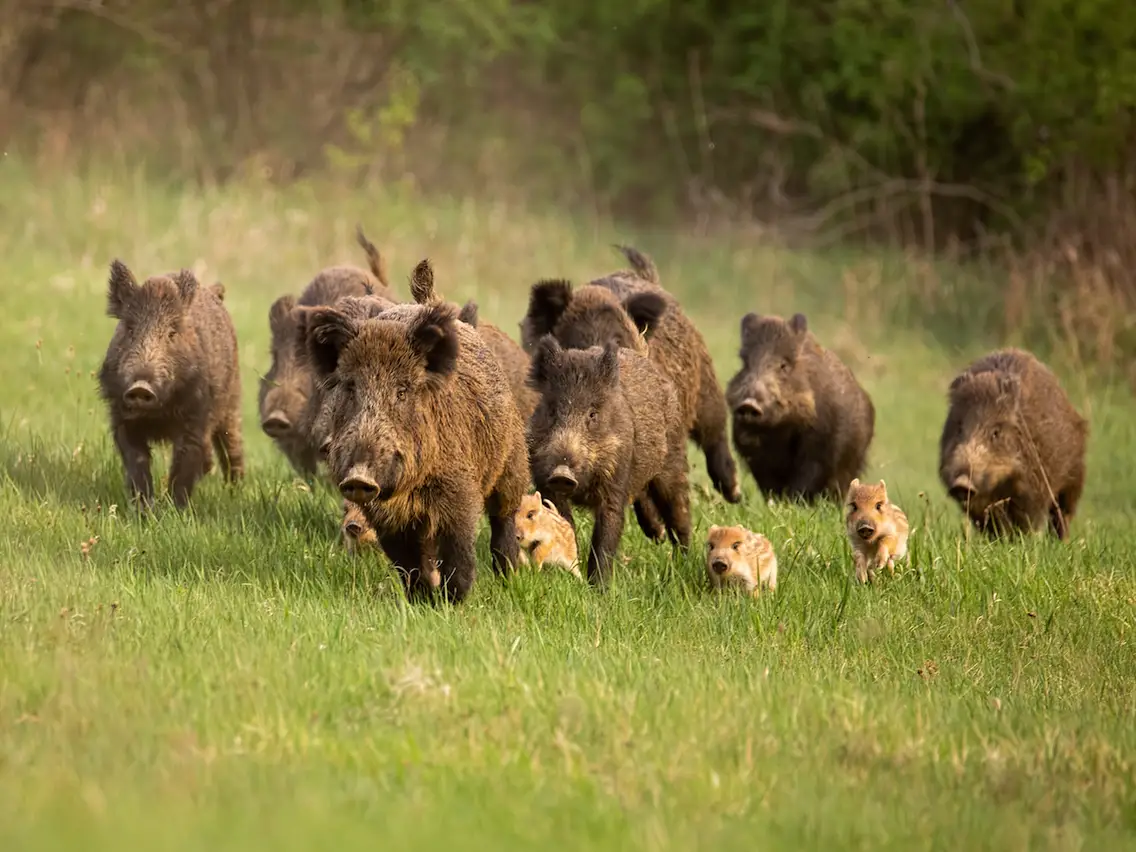Feral hogs have been and remain a significant threat to life, limb, and property in these United States of America and the prairie states of Canada. Any domesticated pig that escapes to the wild has the potential to become feral. These muscular animals, descendants of the first pigs brought to the Americas in the 16th century, average between 75 and 250 pounds, but can be much larger. They run up to 30 miles per hour and have two separate litters of 4-12 new swine piglets each year.
Feral pig populations in the United States alone are estimated between 6 and 9 million, found across 35 known states:

Their behavior is truly boar-ish, resulting in extensive damage to crops estimated at $1.5B in cold, hard U.S. dollars per year. Although information is hard to find by year, the annual number of pig attacks on humans rose dramatically through the early 2000s. Of the 412 attacks reported between 1825 and 2012, 70 percent occurred after 2000. Luckily only four fatal attacks occurred in the United Sates in that time. Sadly another attack victim died in 2019, when 59-year-old Anuhac, Texas resident Christine Rollins was attacked and killed only a few feet away from the front door of her workplace by a herd of feral pigs. Numerous attacks on companion animals have also been reported, including the lovely Canis lupus familiaris, a/k/a the domestic dog, a/k/a man’s best friend.
Happily, according to Hog Man Outdoors (https://www.hogmanoutdoors.com) nearly every state with feral hogs permits them to be hunted. In many such states there is either no license required or the license fee is nominal. So, know your enemy, and happy hunting!

